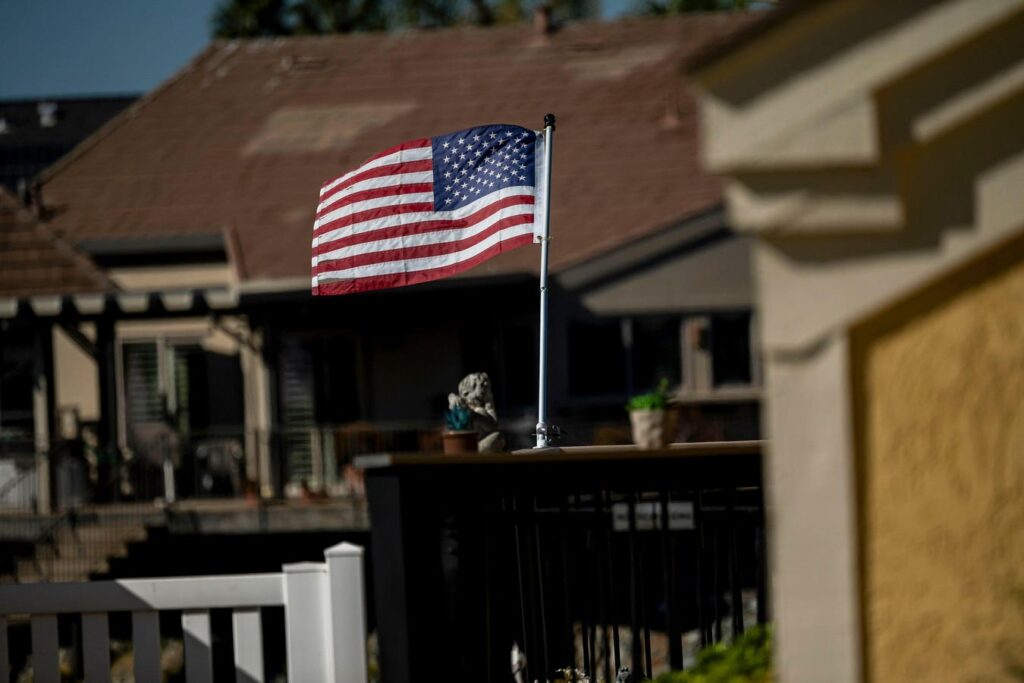All week, markets and politicians dissected President Trump’s proposal to privatize Fannie and Freddie, which support 70% of the U.S. mortgage market. The credit impacts and risks for the U.S. are likely to be outsize, but they are still unclear. Even the rationale remains a bit unclear, other than to remove the FHFA as conservator.
Privatizing Fannie and Freddie: Back To The Future
Since their creation, the two main GSEs have been quintessential mixed-ownership corporations. In 1938, FNMA was established as a standalone company in the New Deal. It was acquired in 1950 by the entity that became the U.S. Department of Housing and Urban Development with two classes of shares: preferred, held by the U.S. Treasury, and common, non-voting, held by a network of mortgage lenders.
In 1968, Fannie was reorganized and split into a successor FNMA and Ginnie Mae. The successor FNMA was listed on the New York Stock Exchange and chartered to purchase, bundle and sell residential mortgages as securities (RMBS). GNMA became part of HUD. Its function: to guarantee payments on securitizations backed by mortgages issued under programs by U.S. government departments like HUD, Veterans Affairs and Agriculture.
FHLMC was created in 1970 along lines similar to FNMA—publicly traded, earning guarantee fees on loan portfolios, with HUD oversight—but its client network is smaller banks and credit unions rather than large banks. Originally, FHLMC was owned by the Federal Home Loan Banks, but under the Financial Institutions Reform, Recovery and Enforcement Act of 1989 it became independent. In 1995, FHLMC diversified into making markets in subprime mortgage collateral.
In 2008, Fannie and Freddie suffered material losses on their combined mortgage portfolio of USD 1.5 TN. They were bailed out, delisted from the NYSE on July 7, 2010, placed under FHFA’s conservatorship, and began trading on OTC markets the next day. The stock of both institutions remains publicly investible alongside their residential mortgage-backed securities and corporate bonds. So there must be more to the current proposal than giving American investors access.
Why Privatize Fannie and Freddie? Follow The Money—
The Big Beautiful Bill will shrink the U.S. tax base if it passes the Senate. Could privatizing these mortgage giants fill the gap with new, incremental tax revenues? It is hard to say without a concrete deal structure in place. However, the mortgage giants already pay taxes on operating income, as well as paying federal, state and local taxes on securities’ earned interest. So the motivation to privatize is not obviously tax-related.
It may have more to do with the U.S. Treasury currently owning the GSE preferreds as well as warrants on 80% of common stock. If pricing on a future IPO were to hit or exceed the target, the U.S. government could reap a one-time, massive windfall. Arranging banks would profit handsomely as well. A USD Trillion IPO (Chairman Pulte’s estimate) could generate fees in the range of USD 40 to 70 Billion. That’s plenty of incentive for a successful initial offering.
But for most Americans, what matters more is what happens in the aftermarket.
Value Creation Vs. Destruction: What Are The Stakes? Here Are Five—
First, what would be the go-forward impact on rates for homebuyers?
The more common theory is that the replacement entities, being purely profit-driven and maybe facing higher funding costs, would drive up rates—and up again as supply shrinks. A minority viewpoint says rates will go down as privatization drives innovation. The reality is—we can predict given a concrete exit plan, but without one, we just can’t know.
Second, and intimately linked, is the status of the U.S. guarantee.
This decision would impact the entire credit market ecosystem starting with borrowers, whose numbers would shrink as government support goes away. If the new entities were to retain U.S. support in some form, the impacts on bank market microstructure and the competitive playing field are less clear; but don’t expect the status quo to continue. Would a distributed ecosystem form anew, or would intense, uneven competition transform the U.S. bank market where only giants survive?
Related to the status of the guarantee is how potential backlash could impact the U.S. government rating, which Moody’s just downgraded to Aa1. Would global bond investors view sudden withdrawal as a default, regardless of the legal definition? And in this same point, will GNMA and its guarantee continue? The answer directly impacts home affordability for veterans, rural homeowners and disadvantaged groups.
Third, are the potential changes to the GSE’s current information disclosure regime.
This question is not yet debated in the media but it should be. The go-forward disclosure package could have the greatest impact on aftermarket performance. Bonds are most active in the capital structure of GSEs today. Their required bond disclosures comply with the very best practices in the world that were created in the U.S. public securitization markets. Will the disclosures continue? Will the public have access to them after the IPO? Or will the financial position of the new players become more opaque as information disclosures lag changes in financial performance? We have seen this movie before in the GFC. It did not end well.
Fourth, the operational impacts of privatization are important but still unclear.
Will the 30-year fixed rate model made in the 1930s continue or gradually be replaced by loan structures benefitting borrowers less and lenders more—floating rate indices, shorter and longer maturities, different funding formulas? Will a forward-settled market replace the To Be Announced market that FNMA and FHLMC currently use? The TBA market today allows sellers to fund their origination pipelines and buyers to lock in prices before transaction specifics are settled because the guarantee equalizes the potential risk between offerings. The cost benefits, which can be quite substantial, may disappear if the guarantee goes away.
Fifth are what Donald Rumsfeld called unknown-unknowns.
If the first four categories of unknowns are known (with the possible exception of #3), news unfolding daily shines a light on impacts we have not yet thought of. Was Moody’s downgrade of FNMA a reflection of recent past performance, or does it also anticipate future shocks to the organization? Does the introduction of an anti-crime unit with AI fraud detection technology materially impact how ?
When FHFA Director Bill Pulte says, “what we’re trying to do…is take cost out of the system and get homes so they can be affordable again,” is he referring to the current interest rate levels or foreshadowing a collapse in prices? These scenarios have drastically different economic consequences.
Finally, when President Trump says, “the U.S. will keep its implicit GUARANTEES,” the key word seems to me to be the one in small caps: implicit. Equities are story paper, but bonds are based on contracts; and it is hard to assign a financial value, positive or negative, to implicit support.
Read the full article here
















